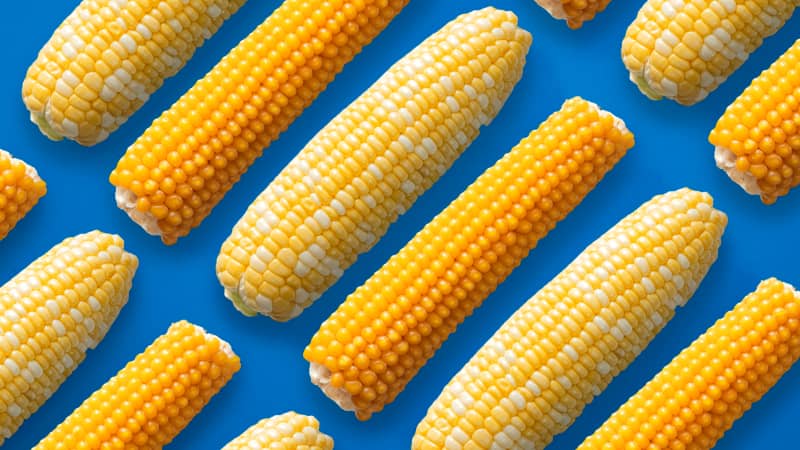Ahhh, corn season: that fleeting high-summer stretch when we chase the idyllic on-the-cob experience by buying the freshest ears and pulling out all the stops to make each bite the best it can be. But the truth is that most of those efforts are pointless, because plump, tender, super-sweet corn is a lot easier to come by than it used to be. Here are five corn myths, debunked, along with explanations about what really matters.
No, Yellow Corn Is Not Sweeter Than White (and Other Corn Myths, Debunked)
Published Aug. 16, 2022.

Sign up for the Cook's Insider newsletter
The latest recipes, tips, and tricks, plus behind-the-scenes stories from the Cook's Illustrated team.
1. Myth: Peeling back the husk and silk is the best way to check quality.
Fact: Feeling the kernels through the husk is just as effective—and more courteous.
Explanation: There’s no need to peel back the husk and silk (which makes ears less desirable for other shoppers). Instead, gently press on the kernels through the husk; they should feel tightly packed, plump, and firm. The silk should look white and clean, and the husk should be green and pliable and closely wrapped around the ear.
Tip: If you shop at a market that allows you to shuck the corn on site, only do this if you plan to eat the corn that day, since the exposed kernels will be prone to drying out.
2. Myth: Yellow corn is sweeter than white.
Fact: All colors of corn are equally sweet.
Explanation: The color of corn is an indication of its carotene content, not its sugar content. Furthermore, the sugar content of many common corn varieties—yellow, white, or bicolor—contain nearly 35 percent sugar, which is almost three times sweeter than the varieties of corn sold decades ago.
3. Myth: Refrigerating corn dulls its sweetness.
Fact: It's fine to store corn in the fridge.
Explanation: While corn plants are sensitive to chilling injury, harvested ears of corn actually benefit from cold storage. In fact, the colder the storage temperature, the better—as long as the corn doesn’t freeze—because cold temperatures, along with humidity, slow the rate at which the corn’s sugar turns to starch. The moist air of a refrigerator also transfers heat from the corn to the environment more efficiently than dry air does and prevents the kernels from drying out.
Tip: To keep the kernels as moist as possible, place the unhusked ears in a wet paper bag inside a plastic shopping bag before refrigerating.
4. Myth: Corn sweetness fades immediately after harvest.
Fact: Most corn stays sweet for days.
Explanation: While older varieties of corn would convert about half their sugar to starch within 24 hours of being picked, that conversion occurs more slowly in the supersweet varieties sold at most markets today. Most will stay sweet for four to seven days after being picked.
5. Myth: Adding sugar, salt, or milk to the cooking water makes corn taste sweeter.
Fact: Seasoning the water doesn’t make a difference.
Explanation: A corn kernel’s skin is virtually impenetrable to seasonings. In taste tests, we couldn’t tell the difference between corn cooked in water and corn cooked in a combination of water and milk. Likewise, corn cooked in water that had been seasoned with sugar or salt tasted no different from corn cooked in plain water. We found that the only way seasonings migrate into the kernels is by first being absorbed by the cob, and that takes far too long to be feasible. Bottom line: You’re better off seasoning corn at the table.





